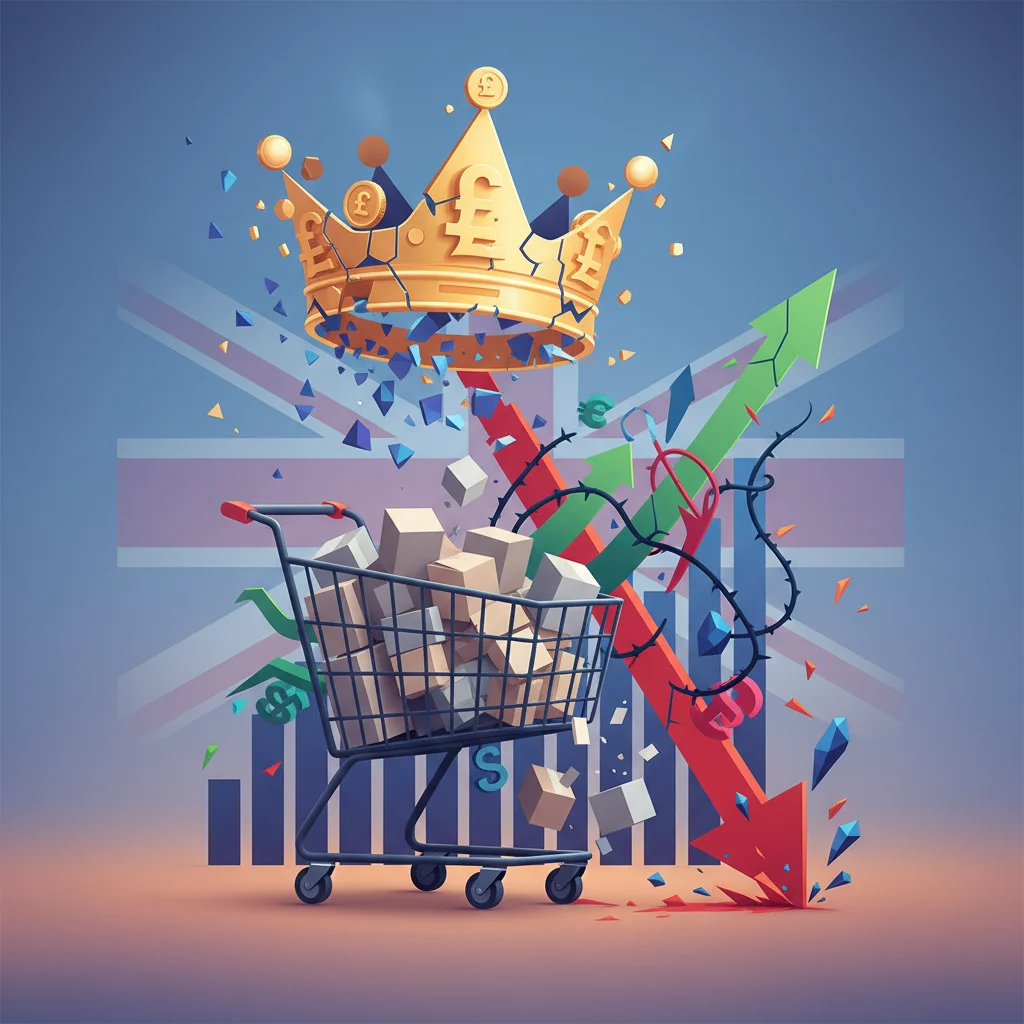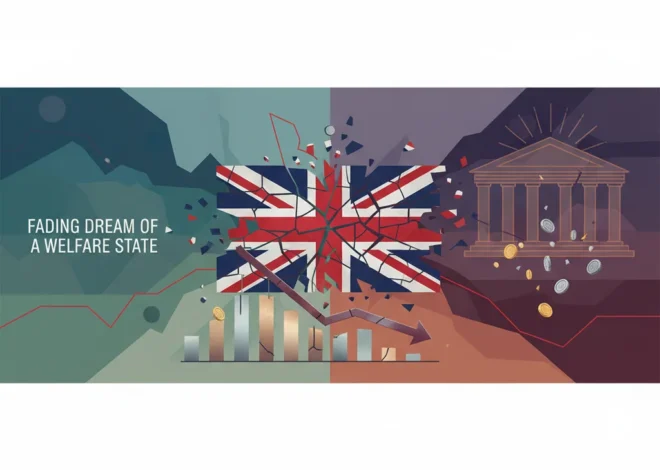
The Poundland Paradox: Why the King of Bargains is Faltering in a Cost-of-Living Crisis
In the complex theatre of the modern UK economy, a curious and counter-intuitive narrative is unfolding on our high streets. At a time when household budgets are stretched to their breaking point and every penny is meticulously counted, one would expect the stalwarts of budget retail to be enjoying an unprecedented boom. Yet, Poundland, a brand synonymous with bargain-hunting for over three decades, is facing a significant struggle. This presents a fascinating paradox for consumers, business leaders, and those involved in investing in the retail sector: why is a champion of low prices finding it so hard to thrive during a cost-of-living crisis?
The answer is a complex tapestry woven from threads of brand identity, fierce competition, and the unforgiving principles of economics. It’s a story that serves as a cautionary tale about the dangers of abandoning a core value proposition and a crucial case study for anyone monitoring the health of the UK’s consumer-driven market. To understand Poundland’s current predicament, we must first appreciate the simple, almost magical, power of its original concept.
The Unshakeable Power of a Single Price Point
For years, Poundland’s business model was a masterclass in psychological marketing and operational simplicity. The promise was absolute: everything for a pound. This wasn’t just a price; it was a covenant with the customer. It eliminated the need for price comparison, streamlined the shopping experience, and created a powerful brand identity that was instantly recognizable and trusted. In the world of retail finance, this model simplified everything from inventory management to marketing.
This single-price strategy allowed the company to build a loyal customer base who flocked to its stores for predictable, rock-bottom value. However, the very foundation of this empire became its greatest vulnerability. The relentless march of inflation, supply chain disruptions, and rising operational costs began to exert immense pressure on the £1 price point. A model built on a fixed price is rigid by nature, and in a volatile economic climate, that rigidity turned from a strength into a critical flaw.
China's AI Gambit: A Stark Warning for the Global Economy and Investors
The Identity Crisis: When £1 is No Longer Enough
The decision to break away from the single-price model was born of necessity, but it triggered a profound identity crisis. By introducing multiple price points, Poundland effectively stepped out of its unique, protected niche and into a brutal, open battlefield. It was no longer the undisputed king of the £1 world; it was just another discount retailer in a market saturated with formidable competitors.
This strategic pivot, while logical from a purely financial perspective, had several unintended consequences:
- Brand Dilution: The name “Poundland” instantly became a misnomer, confusing customers and weakening the brand’s core message. The simplicity that once defined the shopping experience was replaced with the need to check prices, eroding a key differentiator.
- Intensified Competition: The multi-price strategy put Poundland in direct competition with established players who had mastered this model for years.
- Shifting Consumer Perception: Shoppers who once saw Poundland as a haven for guaranteed bargains now had to evaluate its offerings against rivals, and the perception of value was no longer a given.
The competitive landscape in UK discount retail is notoriously fierce. To understand the challenge Poundland now faces, it’s helpful to compare the key players.
| Retailer | Primary Business Model | Key Strengths | Challenge for Poundland |
|---|---|---|---|
| Poundland | Transitioning from single-price to multi-price general merchandise | Strong brand recognition, extensive high street presence | Diluted brand identity and value proposition since moving away from its £1 core. |
| B&M | Multi-price, “treasure hunt” model with a wide range of goods | Larger out-of-town stores, constantly changing stock, strong homewares and gardening offering | Offers a more diverse and exciting shopping experience with bigger-ticket items. |
| Home Bargains | Multi-price, “Top Brands, Bottom Prices” slogan | Focus on branded goods at low prices, consistent value perception | Directly competes on branded FMCG (Fast-Moving Consumer Goods) at highly competitive prices. |
| Aldi / Lidl | Discount supermarket model with a focus on own-brand groceries | Dominant in the low-cost grocery sector, high-quality own-brand products | Siphons off shoppers who can get both groceries and general merchandise in one trip. |
The View from the Stock Market: Pepco’s Pain
Poundland’s struggles are not happening in a vacuum. They are a significant factor in the performance of its Warsaw-listed parent company, Pepco Group, which also owns the Pepco and Dealz brands across Europe. The group has had to issue profit warnings, citing the challenging trading environment in its core markets. For anyone tracking the European retail sector on the stock market, Pepco’s performance is a bellwether for the health of the budget-conscious consumer.
According to the BBC’s report, Pepco’s executive chairman, Andy Bond, admitted that the company had been “too slow to react” to signs that shoppers were cutting back on spending. This admission is critical for investors, as it points to potential internal forecasting and strategy issues, not just external market pressures. Furthermore, the ambitious plan to convert former Wilko stores into Poundland locations presents both an opportunity and a risk. While it rapidly expands their physical footprint, it also increases operational complexity and costs at a time when the core business model is under strain. Taking over the locations of a failed retailer requires a robust strategy to avoid inheriting the same problems that led to the predecessor’s demise (source).
Solving the Financial Crossword: A Modern Investor's Guide to a Complex World
Navigating the Path Forward in a Volatile Economy
So, what does the future hold for Poundland? The path to recovery is narrow and fraught with challenges, but not impossible. It requires a decisive and multi-pronged strategy focused on rebuilding its value proposition and adapting to the new realities of retail economics.
Several strategic imperatives stand out:
- Clarify the Value Proposition: Poundland must urgently answer the question: “Why should a customer walk past B&M or Home Bargains to shop with us?” This means carving out a new identity. Perhaps it’s becoming the go-to for essential household items under £5, or dominating specific categories like stationery, toiletries, or seasonal goods with unparalleled value.
- Embrace Technology: The future of retail is digital, even for brick-and-mortar stores. Investing in modern fintech for payments, a robust e-commerce platform, and a data-driven loyalty program could create new revenue streams and provide valuable insights into customer behaviour. Efficient supply chain management, powered by better technology, is crucial to managing costs in a multi-price environment.
- Strategic Store Refurbishment: The shopping environment matters. As rivals invest in creating bright, well-organized, and pleasant stores, Poundland must do the same to shake off any lingering “jumble sale” image. The company has acknowledged this, with plans to give hundreds of its stores a makeover, a necessary step in its evolution.
- Rebuild Trust: Ultimately, the brand must rebuild the trust that was lost when the £1 promise was broken. This requires consistent pricing, reliable stock, and a clear message that Poundland still represents a smart choice for budget-conscious consumers.
The Stealth Tax Squeeze: Why One in Four Britons Are on a Collision Course with Higher Taxes
Poundland’s struggle is more than just a corporate case study; it’s a reflection of the immense pressures on the UK high street and the broader economy. It demonstrates that in a downturn, simply being “cheap” is not enough. Consumers are sophisticated; they seek “value,” which is a delicate balance of price, quality, and shopping experience. The brands that succeed will be those that understand this distinction and can deliver on it consistently. For Poundland, the challenge is to prove that it can evolve beyond its iconic past and find a new, sustainable identity in the fiercely competitive future of discount retail.


